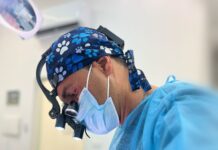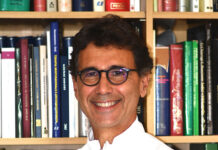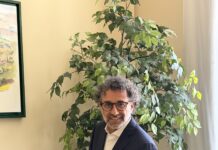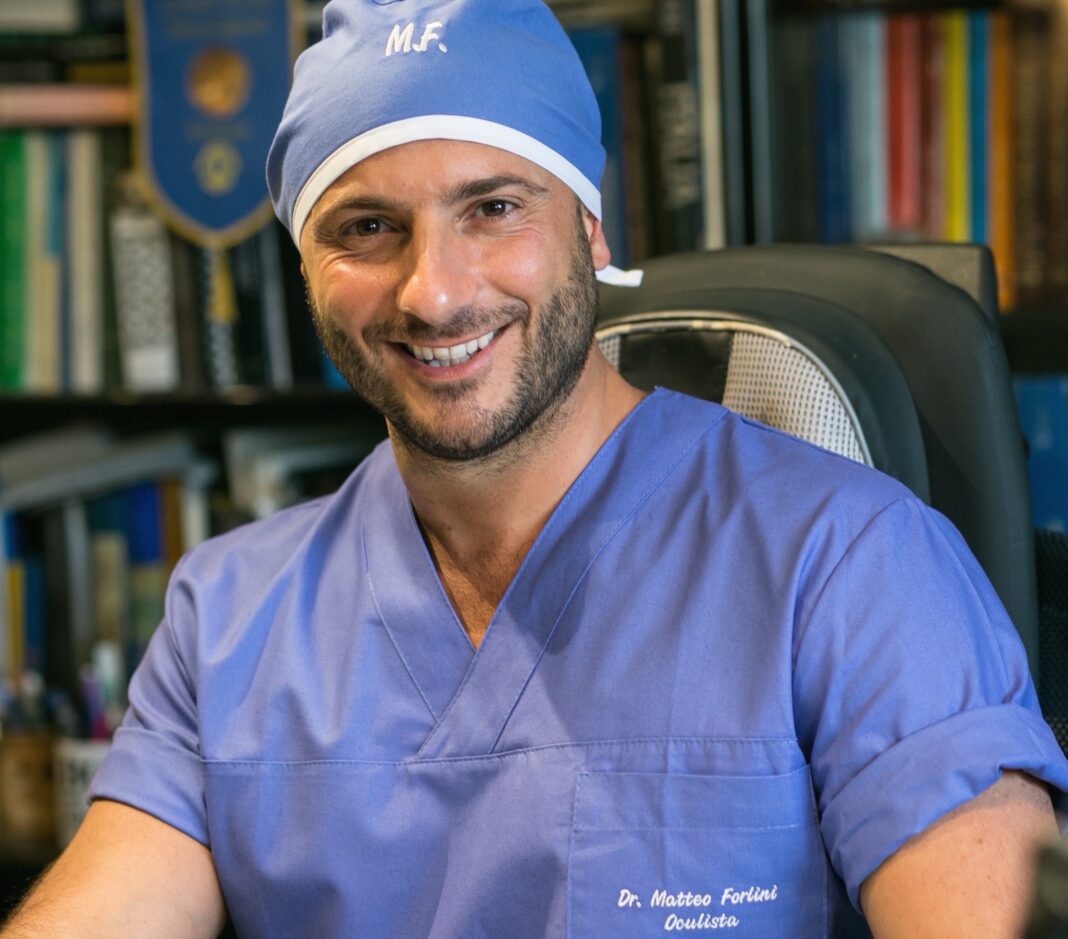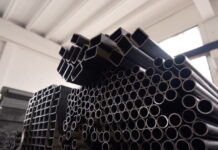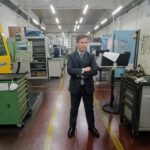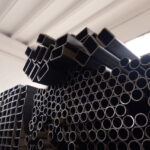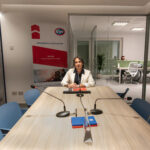Born in Ravenna, Italy, the son of ophthalmologist Cesare Forlini, Dr Matteo Forlini is an ophthalmic surgeon specialising in the treatment of retinal diseases, vitreoretinal surgery and ocular traumatology. An international excellence in the field of ophthalmology, he is the author and co-author of numerous scientific publications in journals worldwide. His latest contribution – published in the Journal of Ophthalmology and the result of collaboration with internationally renowned ophthalmic surgeons – is a Special Issue on Different Methods of Secondary Intraocular Lens Implantation.
by Roberta Imbimbo

Dr Forlini, how did your passion for this profession come about?
With great passion and determination, I decided to pursue the path taken by my father, becoming an ophthalmologist specialising in vitreoretinal surgery, in the treatment of retinal diseases, and in ocular traumatology. After graduating in Medicine and Surgery at the University of Bologna, I specialised in ophthalmology at the University of Modena and Reggio Emilia. It was in Modena that I worked for several years in the complex structure of Ophthalmology at the University Polyclinic, dealing with retinal pathology and vitreoretinal surgery, an activity that I later carried out also at the University Hospital of Parma. To further my studies on the subject, I attended the European Vitreo-Retina Training School EVRTS in Bremen, Germany; I also had the opportunity to gain important experience in clinics of international standing, such as the Weill Cornell Medical College Presbyterian Hospital in New York, the Instituto de Microcirugia Ocular in Barcelona (IMO), the Klinikum Frankfurt Hochst in Frankfurt, and the Aditya Jyot Eye Hospital in Mumbai. Today, in addition to practising privately in my city Ravenna, I also perform my clinical and surgical activities at the State Hospital of San Marino, the Sol et Salus Clinic in Rimini, the D.S.C. in Bologna, the Hesperia Hospital in Modena and the S. Maria Maddalena Clinic in Occhiobello (Rovigo).
Over the years, you have contributed to a number of scientific publications; it is no coincidence that you have been selected several times by the Journal of Ophthalmology as Lead Editor of several in-depth articles, the result of valuable collaboration with other experienced ophthalmic surgeons from all over the world. Can you tell us about it?
The latest work published in the Journal of Ophthalmology – a Special Issue on Different Methods of Secondary Intraocular Lens Implantation – consists of a collection of scientific articles on innovative surgical techniques used in the treatment of complex cataract and ocular trauma cases. In addition to the collection work, I also took care of writing some in-depth articles together with the group of the San Marino State Hospital with which I collaborate, under the guidance of the head physician Dr. Alessandro Mularoni. This Special Issue gathers together scientific articles from all over the world and has as co-editors five professionals of excellence in the field, Professors Boris Malyugin (Moscow), Ike Ahmed (Toronto), Gabor Scharioth (Recklinghausen), Rodolfo Mastropasqua (Chieti), and Alessandro Mularoni (San Marino), and will be presented in September at the ESCRS European Congress in Vienna. Sometimes, unfortunately, we find ourselves having to manage complications after cataract surgery (especially late complications related to the dislocation of implanted prostheses) or after traumatic events, and this has led to the need to resort more and more frequently to alternative artificial crystalline lens implantation surgery (secondary implants). It has become necessary to use new materials and new intraocular lenses in order to achieve better results with fewer post-operative complications.

Why are these techniques innovative? Why do they differ from classic cataract surgery?
Cataract means opacification of the crystalline lens, the natural lens of our eye that focuses images on the retina and regulates far and near vision. Today, this disease is the underlying cause of 50% of all cases of blindness and 33% of visual impairment worldwide. The only treatment available today is surgery – about 600,000 cataract operations are performed in Italy each year – aimed at removing the opacified crystalline lens, which is replaced with an acrylic lens (artificial lens). Modern cataract surgery, the result of the refinement of surgical techniques, in fact consists of placing an artificial intraocular lens (IOL, IntraOcular Lens) inside the capsular bag, which is absolutely biocompatible and high-tech, to restore the refractive power of a natural lens. This capsular bag is usually perfectly transparent and the new intraocular lens is implanted inside it, finding a perfect fit. In complex and severe cases – which may be related either to congenital defects, intraoperative complications or ocular trauma of various kinds – the capsular support may be severely damaged; in these cases it then becomes necessary to resort to the use of alternative intraocular lenses (secondary IOL implants), which are chosen according to the needs of the individual patient: they can be either iris fixation – if they are anchored directly to the iris by means of two clips fixed in the anterior or posterior chamber – or scleral fixation, sutured in the posterior chamber or even without suture using the most innovative techniques.
Il existe donc aujourd’hui toute une série de méthodes de plus en plus conviviales pour les patients, qui permettent d’obtenir des résultats encore inimaginables il y a peu.
Absolument ! Ces dernières années, les progrès de la biotechnologie et des techniques chirurgicales ont permis de disposer de plusieurs prothèses performantes de dernière génération et de plusieurs stratégies de positionnement de plus en plus pointues qui ont littéralement révolutionné la prise en charge des cas complexes. Il suffit de penser aux techniques populaires de Carlevale, Yamane et Iris-Claw qui permettent de fixer la lentille intraoculaire sans suture, avec des avantages considérables pour les patients en termes d’invasivité minimale, de réduction du temps opératoire et de retour plus rapide aux activités quotidiennes. Il s’agit manifestement de méthodes sûres, efficaces et indolores, réalisées en chirurgie de jour, qui améliorent la qualité de vie et la vue des patients, ce qui est décisif dans la quasi-totalité des cas.








